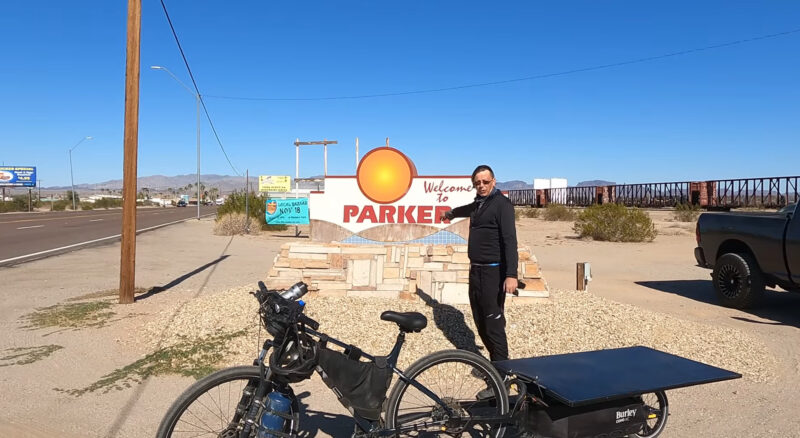Sign up for daily news updates from CleanTechnica on email. Or follow us on Google News!
In another recent article, I shared a video from Aptera about the company’s first road trip from Flagstaff to California. But, as we all know, it takes a fair amount of juice to carry something as big as a car from A to B. It’s a lot less energy than it takes to carry a combustion vehicle (heat and conversion losses are a B-word), but even EVs can do better, as Aptera is trying to prove by using three times less power.
But, another thing we all know is that it takes even less power to move a micromobility vehicle, like an e-bike or an electric scooter. An electric motorcycle uses less power and emits less per person than riding a train, and e-bikes are even cleaner. About the only cleaner forms of transport are regular bikes (no electric motor) and walking. Considering that biking and walking have associated carbon emissions (from our mouths due to the extra strain over sitting still), there’s no such thing as zero carbon — but an e-bike is about as close as you can get without breaking a sweat!
While e-bikes are great for local commuting in decent weather and great for fun rides, they’re not great at all for road trips. Limited battery range, low speeds, and exposure to the elements can make for a not-so-great experience. However, in a YouTube video I recently came across, at least one of these problems was tackled.
While the Arizona, California (briefly), and Nevada sun didn’t quit shining for most of the trip, and speeds didn’t go much over 20 MPH, the problem of limited battery range was pretty much solved when he added a solar panel to a little cargo trailer. The trailer was also useful for things like food, a tent, and other road trip supplies, so that wasn’t much extra drag.
The route took him along Highway 60 out of Phoenix, but he didn’t take the normal route up Highway 93 (future Interstate 11) that most people take in cars. Instead, he stuck with 60 back down toward I-10 and then took a small state highway up to Parker and Lake Havasu City. The first night was spent in Hope, Arizona, at an RV park, and then the second night was spent at a hotel near Lake Havasu (to get a break from tent living).
Along the way, battery power wasn’t constantly held up by the sun. In some cases, when lower pedal assist was practical, the solar panel could keep up with motor demand, keeping the battery almost full. But, when there were hills, wind, or other factors making for more power consumption, the battery would be depleted, even if much more slowly. Along the way, he’d charge his e-bike battery when possible at outlets, and he’d also stop for breaks to let the solar panel catch up. At these stops, he’d tip the panel toward the sun for faster charging using an “optimizer” (a random stick from the desert).
Over five days (and a bunch of flats), he managed to get to Vegas and achieve the goal. Along the way, he proved that with enough patience, you can get there on mostly solar power. But, he also showed that e-bikes could be a lot better in the United States. If everyone could easily load an e-bike on an electric train and get to where they’re going, things could be a lot easier.
Featured image: a screenshot from the embedded video.
Whether you have solar power or not, please complete our latest solar power survey.
Chip in a few dollars a month to help support independent cleantech coverage that helps to accelerate the cleantech revolution!
Have a tip for CleanTechnica? Want to advertise? Want to suggest a guest for our CleanTech Talk podcast? Contact us here.
Sign up for our daily newsletter for 15 new cleantech stories a day. Or sign up for our weekly one if daily is too frequent.
CleanTechnica uses affiliate links. See our policy here.
CleanTechnica’s Comment Policy

